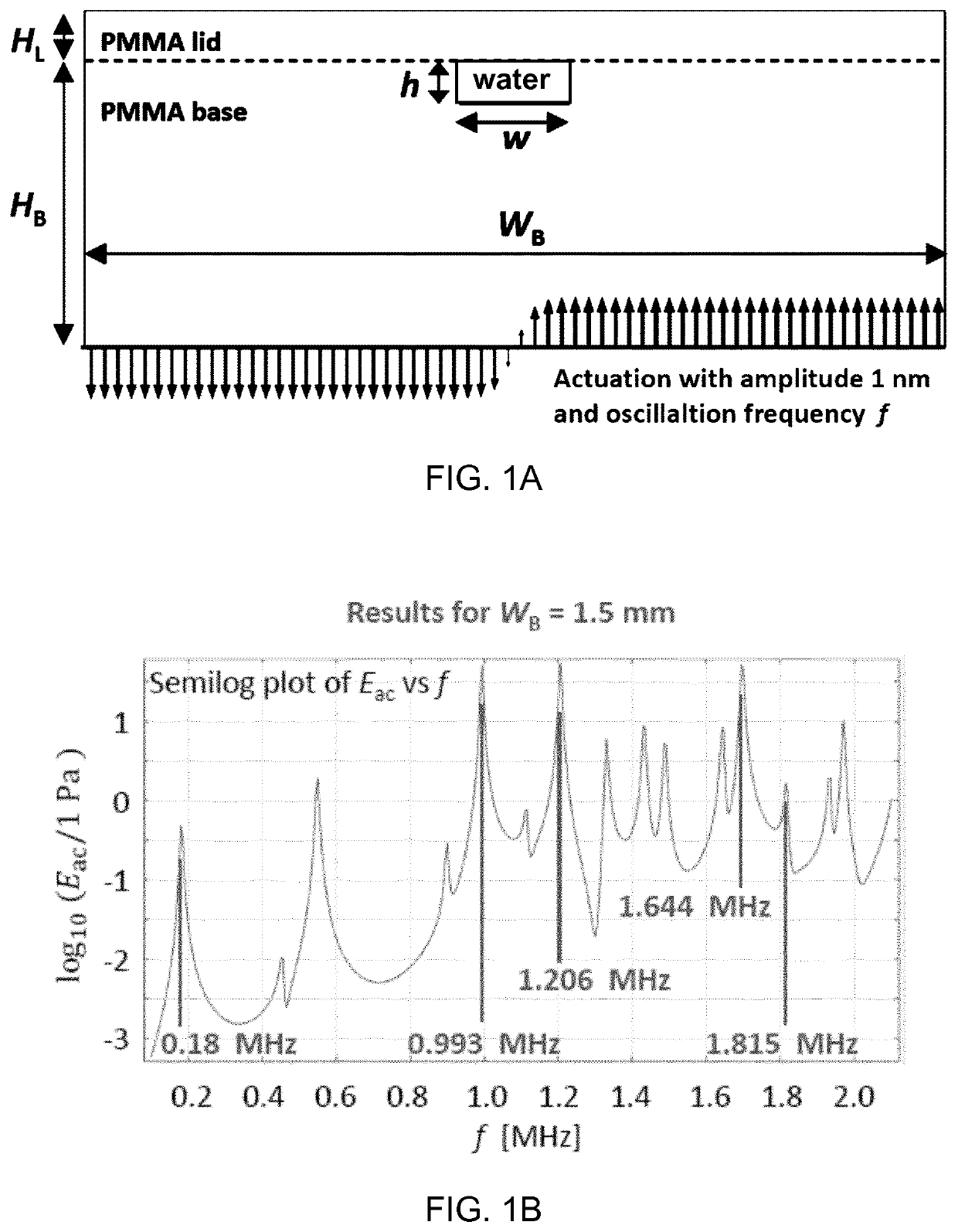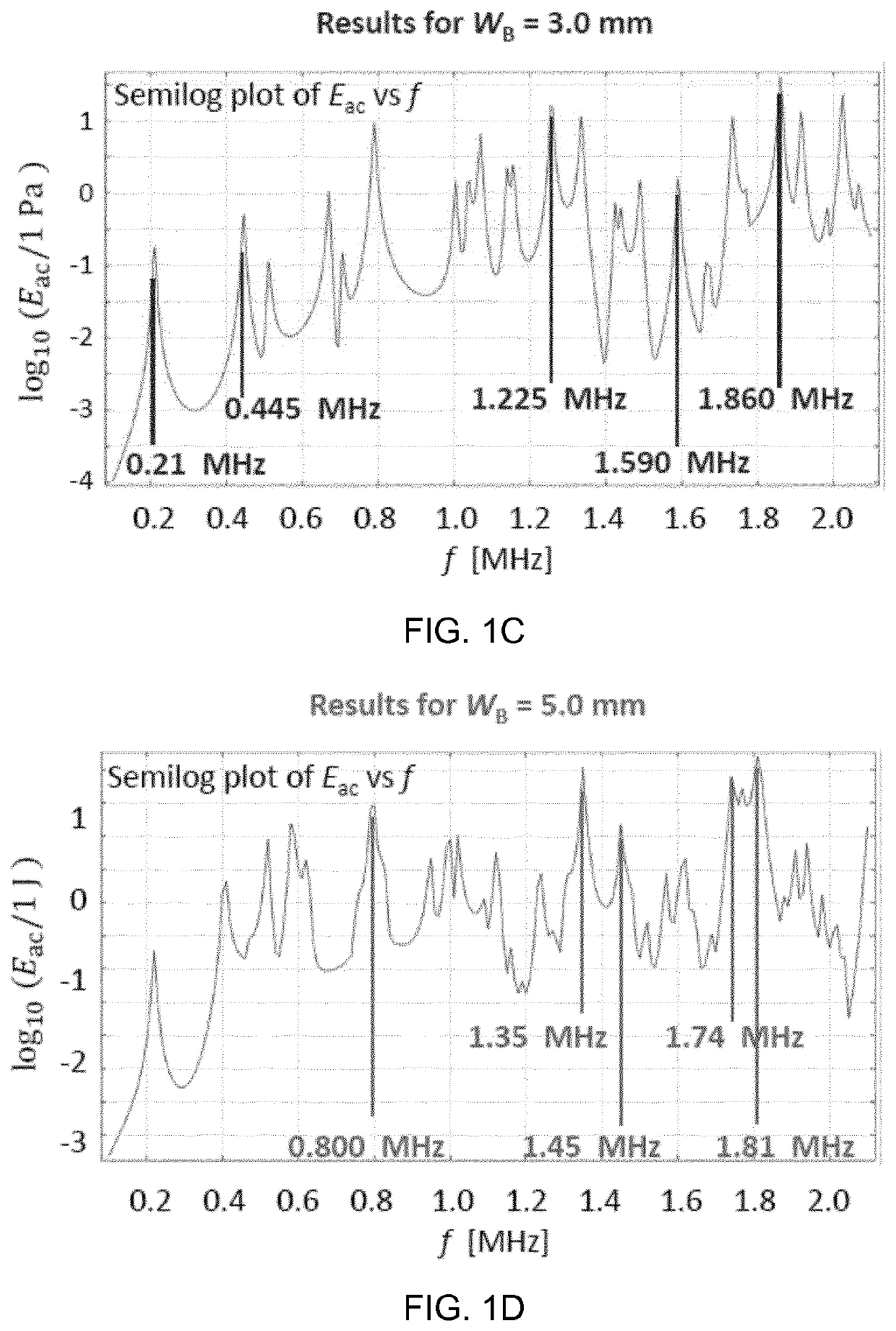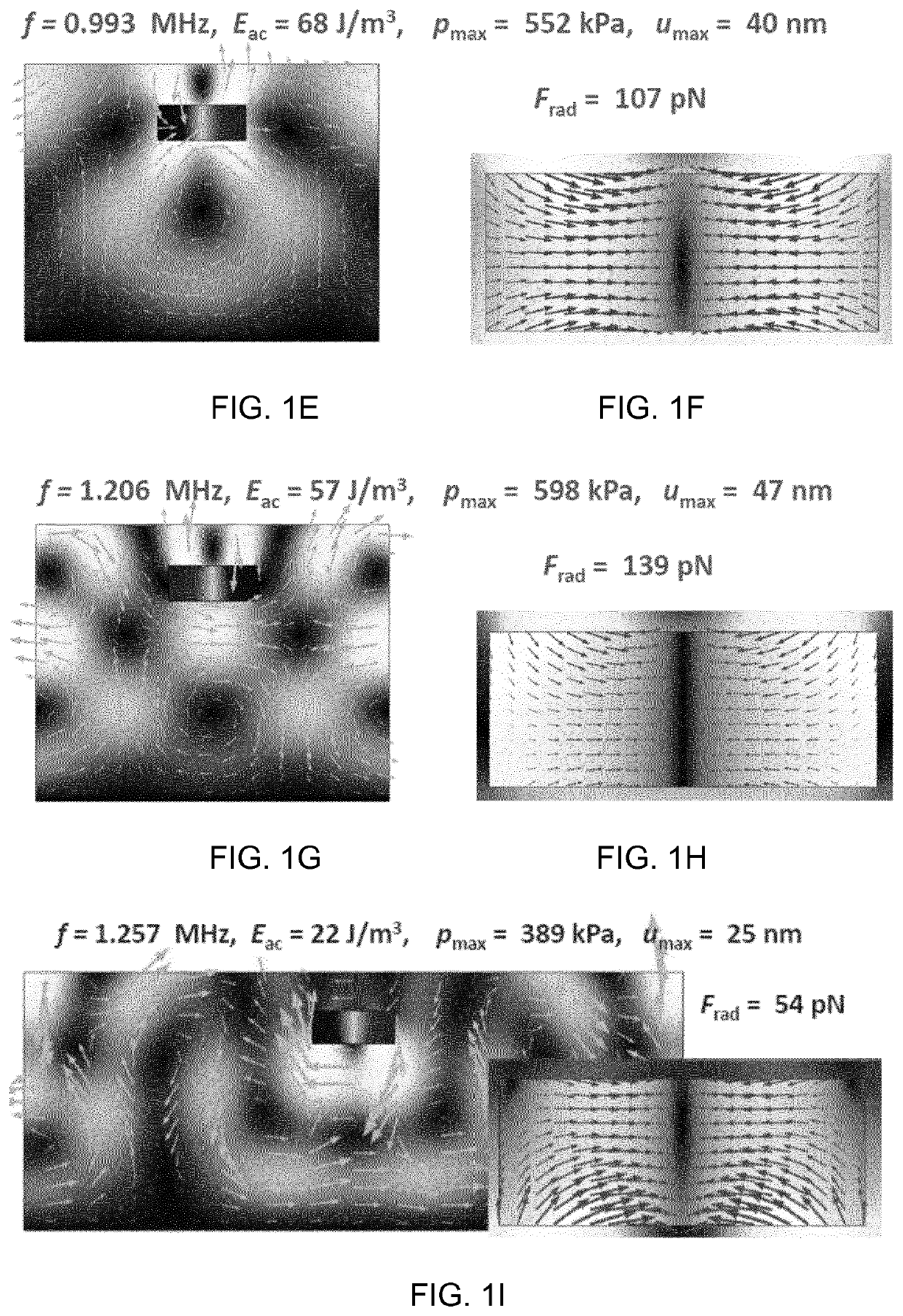Methods and devices for acoustophoretic operations in polymer chips
a polymer chip and acoustophoretic technology, applied in the field of acoustophoretics, can solve the problems of low acoustophoretic efficiency, low separation efficiency, and low efficiency of acoustophoretic operations, and achieve the effects of reducing production costs, reducing labor intensity, and efficient use of polymeric substrates
- Summary
- Abstract
- Description
- Claims
- Application Information
AI Technical Summary
Benefits of technology
Problems solved by technology
Method used
Image
Examples
example 1b
Simulation Comparing Asymmetric and Symmetric Actuation
Materials and Method
[0131]As in example 1 for WS=3.0 mm and a total height of the chip=1.18 mm. The frequency f=1.745 MHz was selected and simulations were performed for an asymmetric actuation and symmetric actuation.
Results
[0132]FIG. 1M shows Frad for symmetric actuation at 1.380 MHz. The force vectors are directed towards the side walls of the channel.
[0133]FIG. 1N shows Frad for symmetric actuation at 1.745 MHz. The force vectors are directed towards the ceiling of the channel and also towards the side walls of the channel.
example 2
3D Simulation of Part of PMMA Chip
Materials and Method
[0134]A PMMA chip 1B, see example 4 for dimensions was simulated using the parameters of example 2. The simulation was made using the ¼-symmetry:
0x<Ls / 2Ls=40 mm
0y<Ws / 2Ws=3 mm
0z<Hs Hs=1.18 mm
[0135]The asymmetric actuation, defined as (0.1 nm)*tan h(50*y / Ws) was applied in the xy plane at z=0.
[0136]The xy plane at y=0 has antisymmetric boundary conditions due to actuation and the yz-plane at x=0 has symmetrical boundary conditions due to the symmetry away from the center plane in the chip along the x-axis.
Results
[0137]The two largest resonances, as measured using the acoustic energy Eac was found for 1.29 MHz, which corresponds exactly to the experimental value, see example 4, and 1.63 MHz which is about 105% of the experimental value of 1.55 MHz, see FIG. 2A.
[0138]For 1.29 MHz the maximum Frad was 4.0 pN (note here that the amplitude of the actuation is 1 / 10 of the amplitude used in example 1, hence the lower Frad. FIG. 2...
example 3
3D Simulation of Full Chip
Materials and Method
[0140]Chips 1B (WS=3.0 mm) and 1F (WS=5.0 mm), both having the height (HS=1.18 mm) and length (LS=50 mm) over the full height using the quarter vertical transverse symmetry plane and the vertical axial anti-symmetry to reduce the geometry to a quarter (0S / 2=25 mm and 0S / 2=1.5 mm or 2.5 mm) as in example 2.
Results
[0141]The table below compares the resonance frequencies predicted by the simulation with those identified in the experiments, see example 4.
[0142]Chip 1B
[0143]
f (MHz) / f (MHz) / f (MHz) / f (MHz) / ResonanceFrad (pN)Frad (pN)Frad (pN)Frad (pN)Simulation1.132 / 0.381.277 / 0.051.381 / 0.201.455 / 0.88Experiment1.29——1.550
[0144]FIG. 3A shows the acoustic energy Eac for chip 1B, and FIG. 3B shows Frad in the center of the channel for f=1.456 MHz.
[0145]Chip 1F
[0146]
f (MHz) / f (MHz) / f (MHz) / f (MHz) / f (MHz) / ResonanceFrad (pN)Frad (pN)Frad (pN)Frad (pN)Frad (pN)Simulation1.027 / 1.330 / 01.415 / 1.731 / 1.790 / 0.071.050.540.31Experiment1.1201.3301.4601.770—
[01...
PUM
| Property | Measurement | Unit |
|---|---|---|
| frequency | aaaaa | aaaaa |
| frequency | aaaaa | aaaaa |
| frequency | aaaaa | aaaaa |
Abstract
Description
Claims
Application Information
 Login to View More
Login to View More - R&D
- Intellectual Property
- Life Sciences
- Materials
- Tech Scout
- Unparalleled Data Quality
- Higher Quality Content
- 60% Fewer Hallucinations
Browse by: Latest US Patents, China's latest patents, Technical Efficacy Thesaurus, Application Domain, Technology Topic, Popular Technical Reports.
© 2025 PatSnap. All rights reserved.Legal|Privacy policy|Modern Slavery Act Transparency Statement|Sitemap|About US| Contact US: help@patsnap.com



